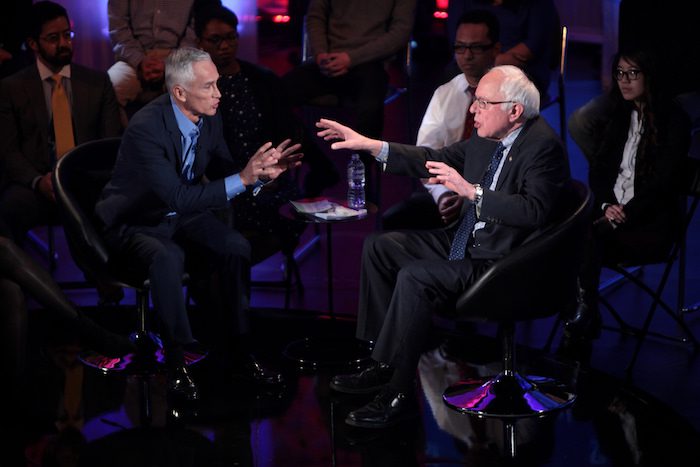
At the Iowa Caucus back in February, Univision political reporter Fernando Peinado posted a video of one of the now infamous tiebreaker coin tosses with a Spanish caption:
Así funciona el #IowaCaucus Un empate a votos es roto lanzando una moneda al aire Gana @HillaryClinton pic.twitter.com/xHdUmeYobw
— Fernando Peinado (@FernandoPeinado) February 2, 2016
That tweet got some traction and Peinado’s video got some replay in other news outlets. He quickly tweeted the same video in English:
This is how the #IowaCaucus works. A tie is solved tossing a coin @HillaryClinton wins pic.twitter.com/yZDTUKFJXQ
— Fernando Peinado (@FernandoPeinado) February 2, 2016
“Our reporter decided to do it himself. There was no specific strategy behind it. Yet when he tweeted the same thing in English, it went huge. We had outlets all over calling us to ask if they could use Fernando’s video,” Borja Echevarría, VP and editor-in-chief for digital at Univision (and a former Nieman Fellow), said. “It was in those moments that we thought, when you have something no one has, and you put it in English, the market gets that much wider, and you have the attention of a completely different market. If we’re going to have something unique, why don’t we also put that content into English?”
Univision is now starting to offer English-language stories at a dedicated English section of its website. The section is starting out with a three-person team, helmed by former Reuters Miami bureau chief David Adams, Jessica Weiss from the Miami New Times, and Rachel Glickhouse from Medium, and publishing an expected mix of original reporting stories translated from the Spanish-language side, selected from several Univision TV and radio affiliates, as well as some original reporting. There will be collaborations with Univision Investiga, and with Fusion.“Many Latinos now are Latinos of the second, third generation, and feel very comfortable in English. Maybe they can read in Spanish and have a Latino background, the culture is there, but they feel more comfortable in English, while they still care about specific issues like immigration,” Echevarría said. (According to research by Pew, more than 60 percent of U.S. adult Hispanics speak English or are bilingual. Univision is, of course, the dominant U.S.-based Hispanic-oriented TV news network.) “Why? Maybe because their parents are immigrants. There are even cases where you might be a 20-year-old U.S. citizen but your parents are undocumented — is there relevant content we can give them?”
There were hints of this mission in the original proposition of Fusion, which was conceived of as the first English-language cable network targeting Hispanic millennials. Fusion changed its tune quickly, though, and began targeting the broader demographic of all millennials. Its website now is decidedly general-interest, with an eye toward more diverse voices and a spunkier lineup of verticals (“Justice,” “Sex & Life,” “Real Future”).
“If they speak Spanish or are over 30, they work for Univision. If they’re under 30, they work for Fusion,” Jorge Ramos, Univision Anchor and host of a daily news show on Fusion called America, joked back in 2014. (I reached out to Fusion for comment on its potential collaborations with this new English-language site and will update if I hear back.)
The Univision News section will cover politics, health, education, environment, cultural topics like music, and other issues with a focus on how they affect Hispanics, and will also dive into Latin American coverage (“the English side is going to be important for us there, too”), according to Echevarría.
“The Latin American stories are still underserved in the U.S., though it’s true that mainstream media here has recently been looking to the region, but we already have a strong sensibility with that, and we’re going to push hard with both Spanish and English,” Echevarría said. “We’re still testing the waters, and we’re not going to be covering everything. But we’re making it bigger. For the first year, we’re going to be growing slowly and looking at various metrics to see what makes sense — let’s just try things out and see what works.”He pointed to a digital project that traces the relationship between the Colorado River and Latino and Hispanic populations living near it, presented in both English and Spanish: “Our environmental reporters took a long trip following the river and reporting on the huge impact it’s had — it’s not the kind of project I would say an English-speaking U.S. media company would normally take.”
“It’s impossible to understand the future of this country if you don’t understand it bilingually,” he added. “It makes no sense for us not to look at both languages.”